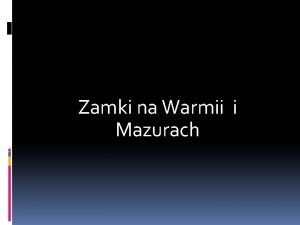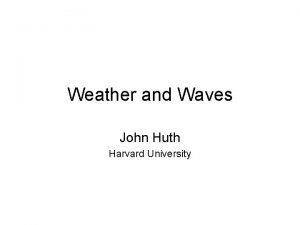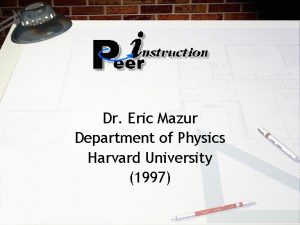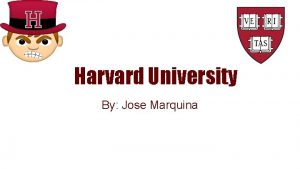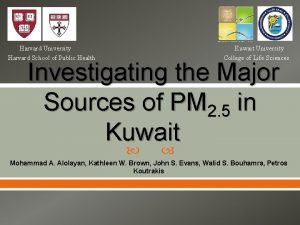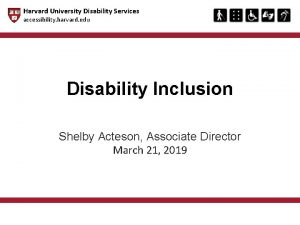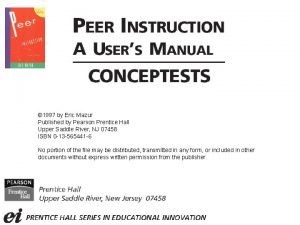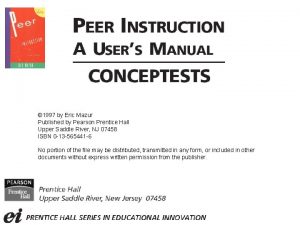Dr Eric Mazur Department of Physics Harvard University








- Slides: 8

Dr. Eric Mazur Department of Physics Harvard University (1997)

PER: A Real Eye Opener • Traditional (teacher-centered) methods of instruction versus “informed” (studentcentered) methods of instruction. • Many bleak results from traditional methods* – – Low student interest Students retain preconceptions Lack of conceptual understanding More emphasis on memorization than understanding resulting from “surface” learning rather than “deep” learning. *Sheila Tobias (1990) They’re Not Dumb, They’re Different: Stalking the Second Tier. Tucson, AZ: Research Corporation.

Mazur’s “Peer Instruction” • • Pre-class reading Reading quiz Lecture on selected topics Individuals work on Concep. Tests Small group discussion Feedback provided to instructor Remediation as necessary

P. I. Procedure - 1 • Assign reading & write reading quiz. • Prepare limited lecture outline (3 -4 topics) from reading. • Prepare Concep. Test questions: – – – Single concept per question Question not soluble using equations Adequate M. C. foils (based on preconceptions) Unambiguous wording Neither too easy nor too hard.

P. I. Procedure - 2 • Lecture (approx. 15 min. per topic) – 7 -10 min. for lecturing – 5 -8 min. for Concep. Test) • Demonstrations – Not part of lecture – Related to Concep. Test questions • Examinations contain: – Concept questions – Equation-based questions

Conducting Concep. Tests • Students view question, reflect on answers. • Students record individual responses on whiteboard responder pads. • Students share responses and gather in small groups to work out detail. • A single group response is given. • Instructor responds to groups.

? ’s about Peer Instruction • Does P. I. really work? • Do traditional problem-solving skills suffer as a result of using P. I. ? • How does one deal with the “depth versus breadth” argument using P. I. ? • How much effort does P. I. take?

Peer Instruction Resources • Mazur, E. (1997) Peer Instruction: A User’s Manual. Upper Saddle River, NJ: Prentice Hall. • Ji. TT also something worth checking out • World Wide Web: http: //galileo. harvard. edu

